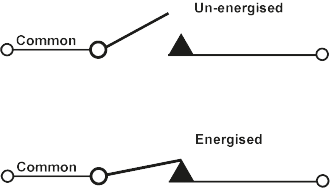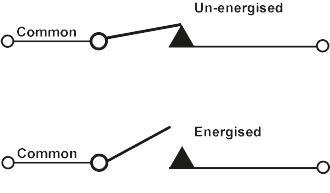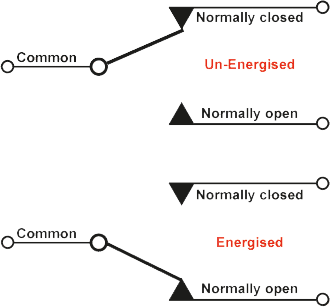Understanding Reed Relay Terminology (RT)
Form A
Form A describes a relay whereby the contact is a simple switch, which is open or closed, and the un-energised position is the open condition. For a single relay this would also be described as a single pole, single throw (SPST) relay with a normally open (NO) contact.
If the relay has multiple contacts in the same package it would be described as having (for example) 2 Form A contacts (DPST).
Pickering has a range of Form A Reed Relays, for example our Series 109 that are an ideal choice for high density applications, or our high voltage Series 104 for up to 3kV.

Form B
Form B describes a relay whereby the contact is a simple switch, which is open or closed, and the un-energised position is closed.
More information on Pickering Series 107.

Form C (Changeover - break before make)

Form D (Changeover - make before break)
Latching Relay
Latching relays have two or more stable positions for the contacts when power is not applied. To change the state of a relay a coil has a voltage transiently applied to it with a defined duration. Latching relays can be used for applications where minimisation of control power (coil current) is critical or where a power failure requires the switch to be left in the state it was set to until power is restored. The latter case needs careful design to avoid transient change instructions as the power fails. The latching mechanism usually relies on a magnet to provide the latching function.
Latching relays are generally not liked in modern software controlled systems because the software may not have direct knowledge of the relay state, particularly at power on. Some latching relays can have extra contacts to provide a direct indication of the contact position. This type of relay is not commonly available in reed relay form.
Safety Relay
Also known as a force guided contact relay this type of relay is designed with two or more
contact sets (poles) and the mechanical design is such that if one
contact one pole fails to change position because of a weld the other
contact on another pole cannot close the corresponding contact. The
mechanical design usually relies on forces being applied to close to the
contacts. There are no commercial solutions for a safety relay using
reed switches.




 浙公网安备 33010602011771号
浙公网安备 33010602011771号